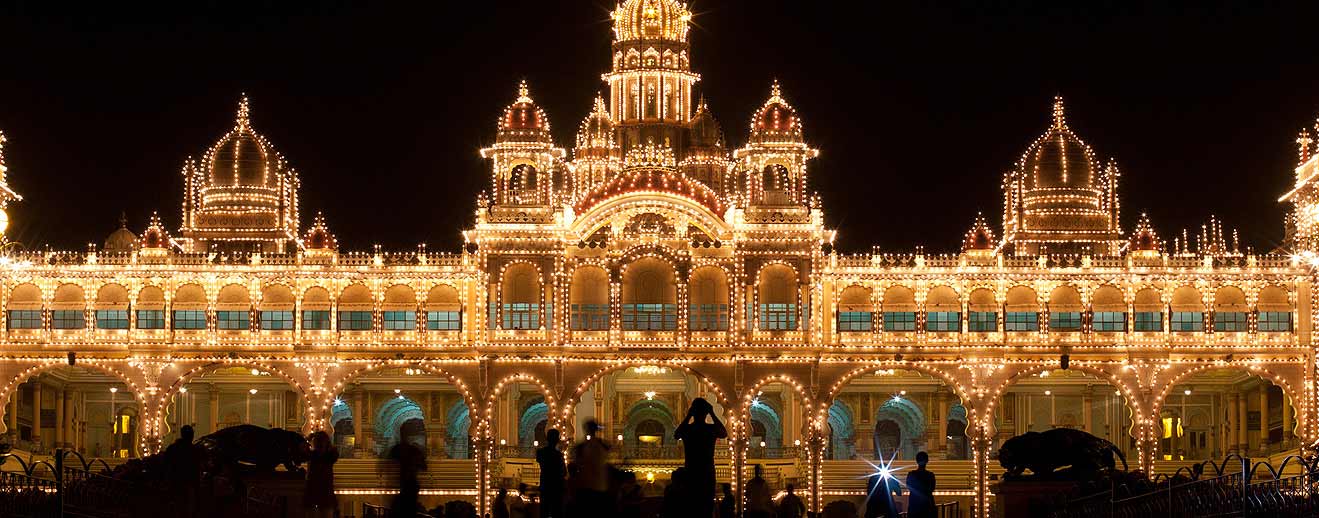
Mysuru (Mysore), the royal city of Karnataka
The first image that comes to mind when I think of Mysore is its incredible palace, sparkling with thousands of lights. But this city of Maharajas has far more to offer: its famous flower market, its Indo-Saracenic architecture (legacy of the British Raj) and its open-air Nandi sanctuary on Chamundi Hill. Together these have made it one of the most visited towns in Karnataka.
Mysuru (formerly Mysore) is a pleasant, verdant town, 140km from the very modern Bengaluru (Bangalore).
It was a princely state from 1399 to 1947, ruled by the Wodeyar Dynasty, with a brief hiatus from 1760 and 1770, when Sultans Haidar Ali and Tipu Sahib took power.
The name Mysore is an Anglicised version of Mahishuru, meaning “the body of Mahisha”. Mahisha in turn derives from Mahishasura, a demon in Hindu mythology.
Mysore Dasara

Mysuru Dasara is held the last day of Navaratri festival also called Vijayadashami, the most auspicious day. Dasara usually falls in the month of September or October. The Mysore Palace is illuminated daily with nearly 100,000 light bulbs from 7 pm to 10 pm on all days of the festival. Various cultural and religious programs highlighting the dance, music and culture of the State of Karnataka are performed in front of the illuminated Palace.
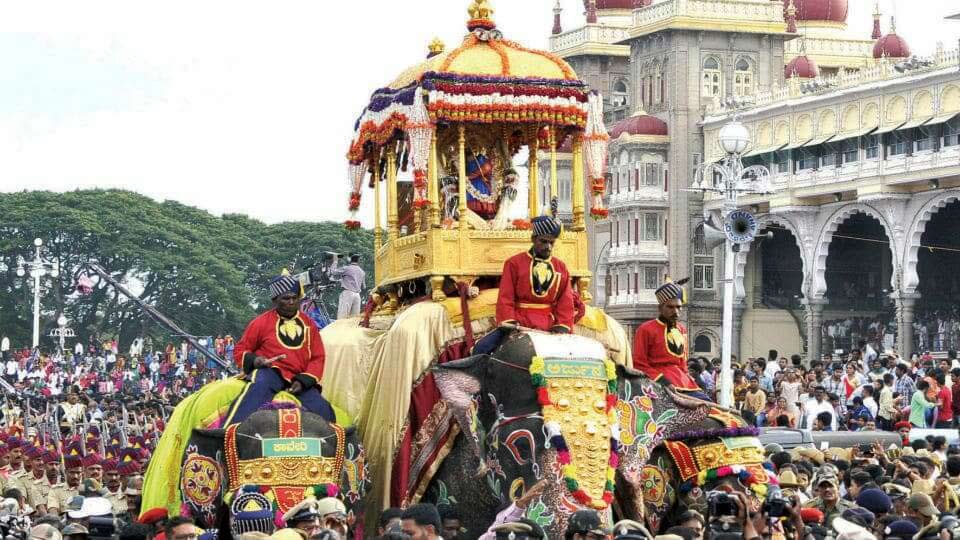
On Vijayadashami, the last day, the traditional Dasara procession (locally known as Jumboo Savari) is held on the streets of Mysore city. The main attraction of this procession is the idol of the Goddess Chamundeshwari which is placed on a golden mantapa (which is around 750 kilograms of gold) on the top of a decorated elephant.
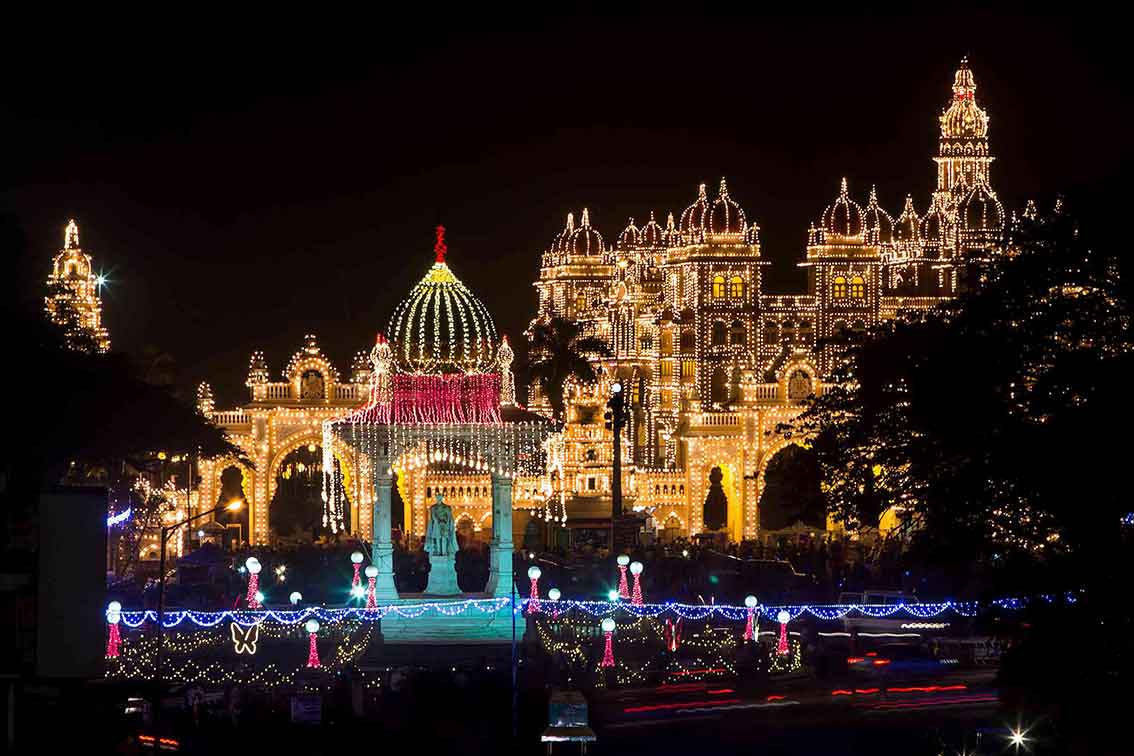
And now, let’s visit Mysore!
Mysore Palace
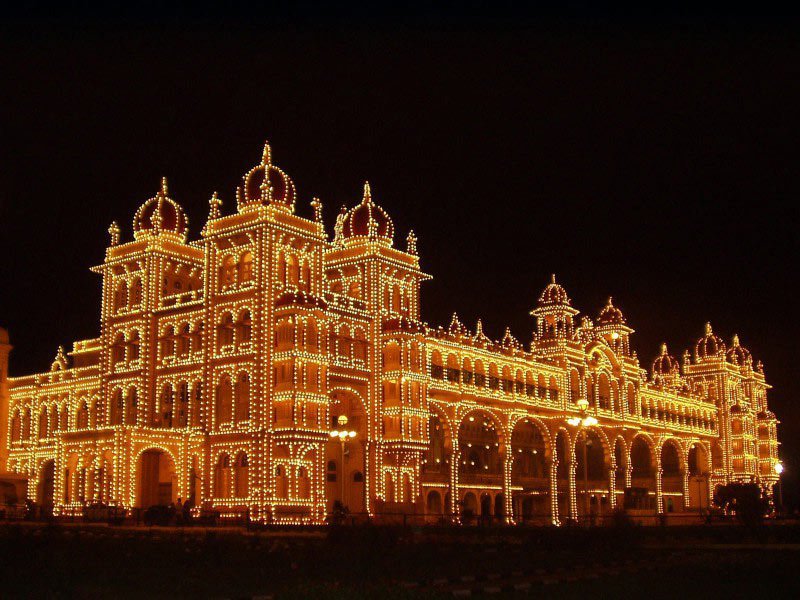
Mysore Palace is a fairytale palace, especially when it is lit up. King Krishnaraja Wodeyar IV commissioned it from the British architect Lord Henry Irwin in 1897. The building was completed in 1912 and enlarged around 1940. The illumination of the Palace on Sundays and bank holidays from 7pm to 7.45pm is a fantastic sight.

Devaraja market
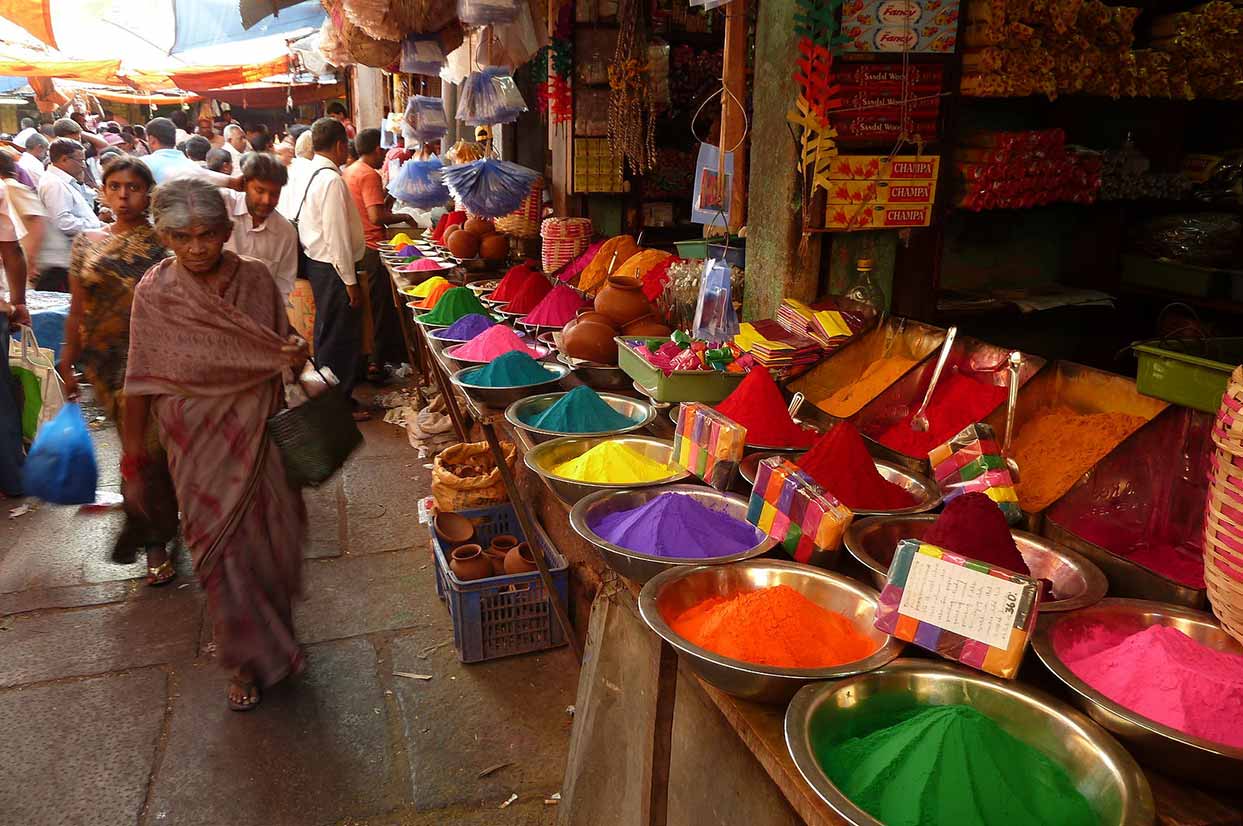
The Devaraja market, more than 100 years old, is an integral part of Mysore’s heritage. It is a typical Indian market, colourful, vibrant and fragrant. An absolute must.
Lalitha Mahal
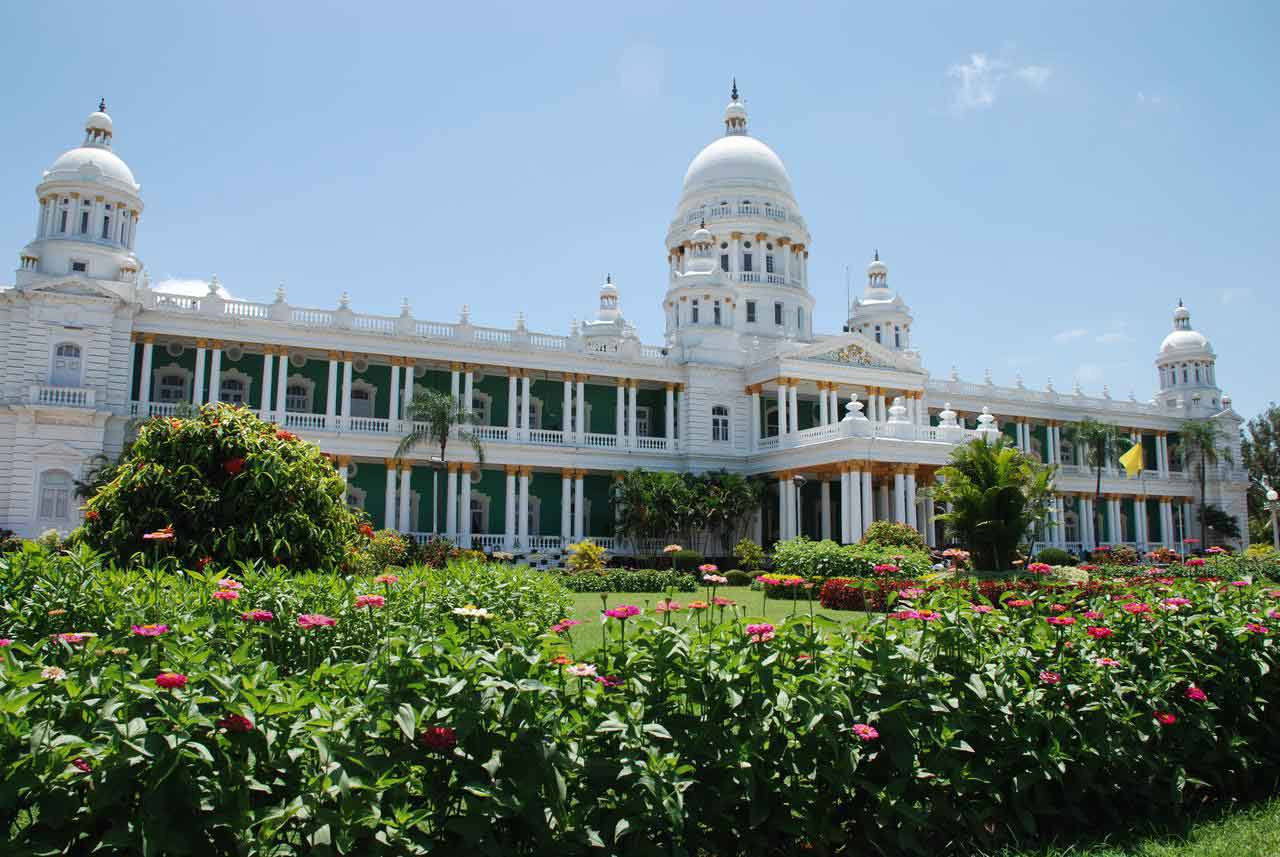
Mysore’s second largest palace is the Lalitha Mahal, near Chamundi Hill. The architecture was inspired by St. Paul’s cathedral in London. It was built by the Maharaja of Mysore, Krishnaraja Wodeyar IV, to house the visiting Viceroy of India. It has been converted into a luxury hotel.
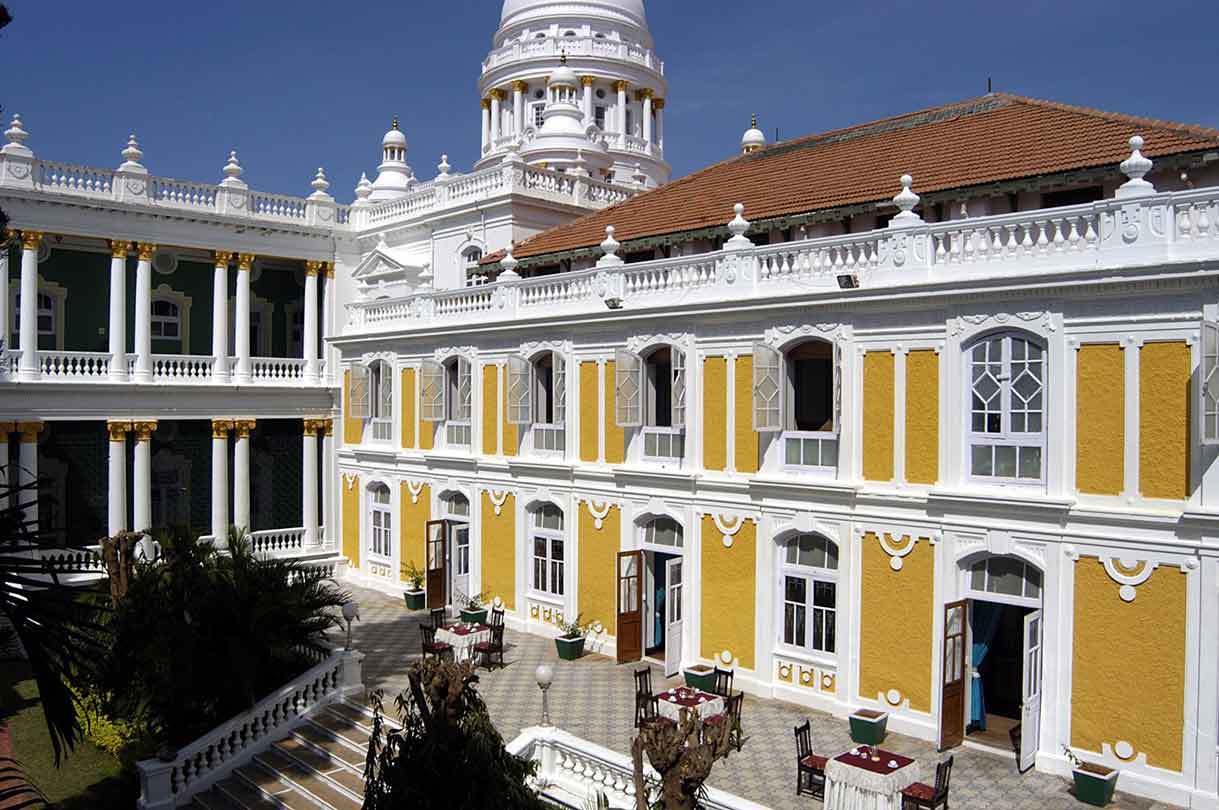
St. Philomena’s Church
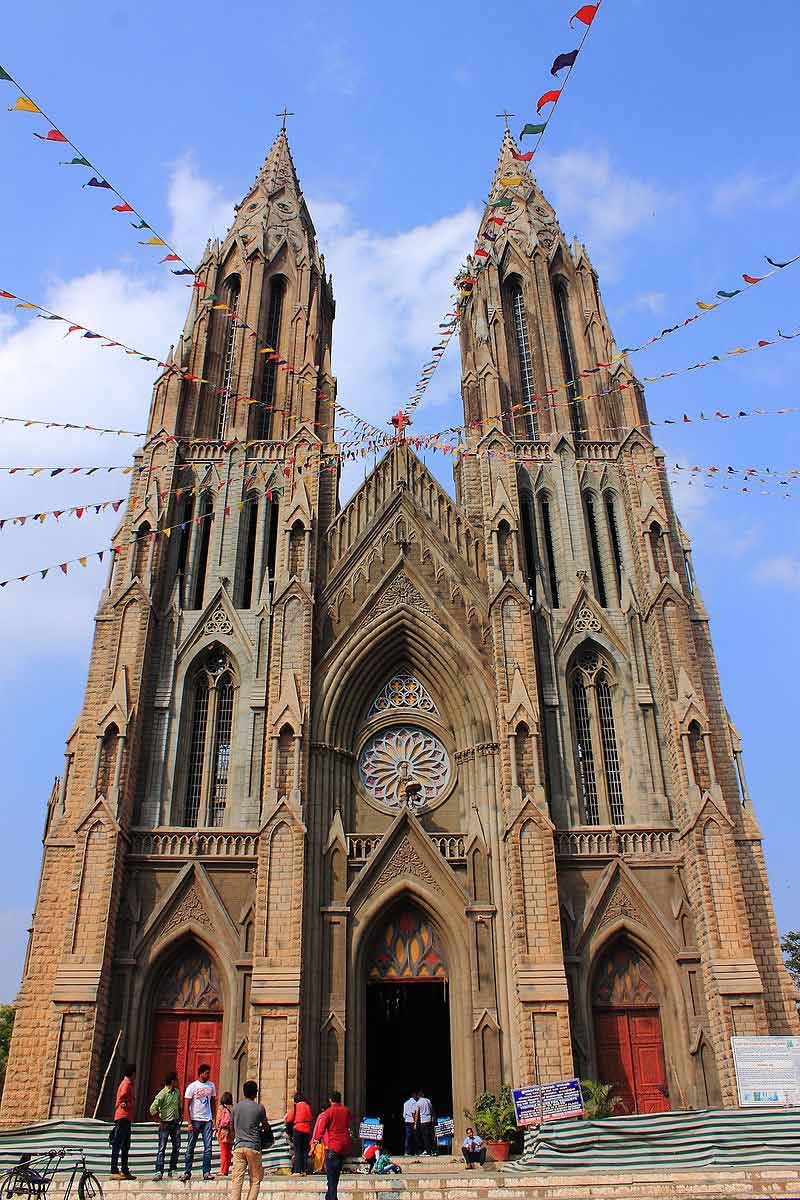
St. Philomena’s church, built in 1956, was design by a Frenchman called Daly and modelled after Cologne cathedral in Germany.
Chamundi Hill (13km)

Chamundi Hill is named after the goddess Chamundeshwari (deity of the royal family). Chamundeshwari temple stands at the top of the hill. About halfway to the top stands a statue of the bull Nandi, Shiva’s vahana (vehicle or mount).
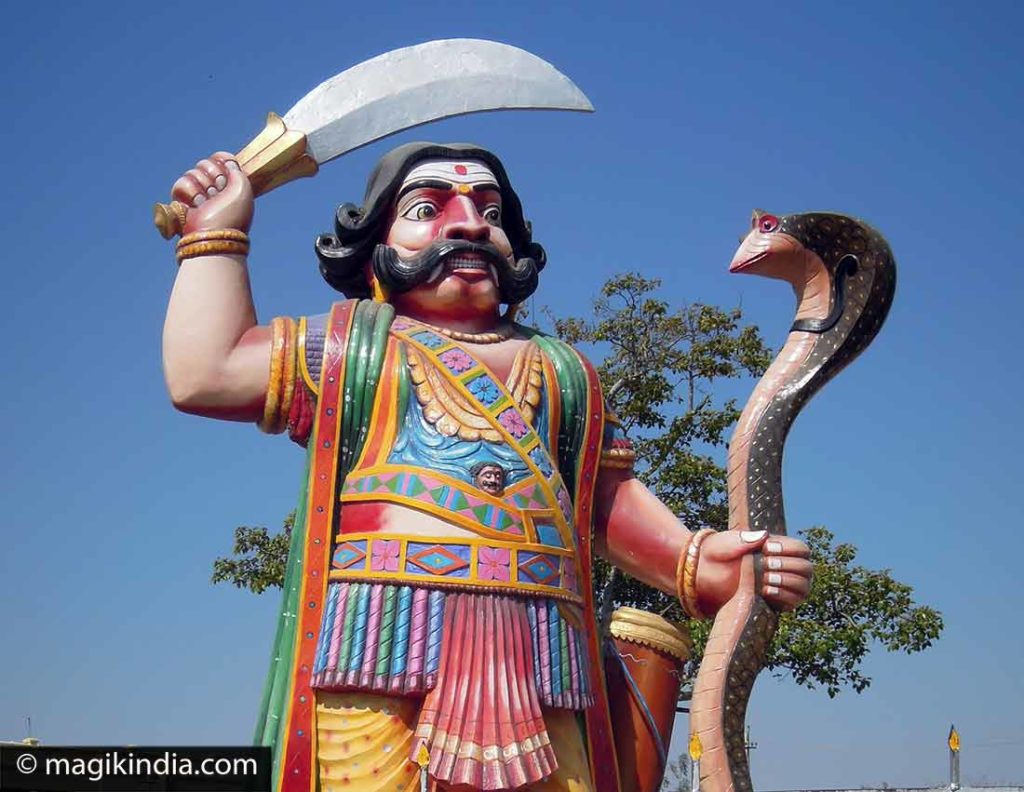
The Nandi statue is over 350 years old and one of Mysore’s oldest icons. It was carved in situ from a huge rock. It is the third largest Nandi monolith in India, measuring some 5m high and 8m long.
Chamundeshwari temple houses the Hindu goddess Chamundeshwari, one of the forms of Durga. The place is one of the 18 Maha Shakti Peethas. Sati Devi’s heart is said to have fallen here.
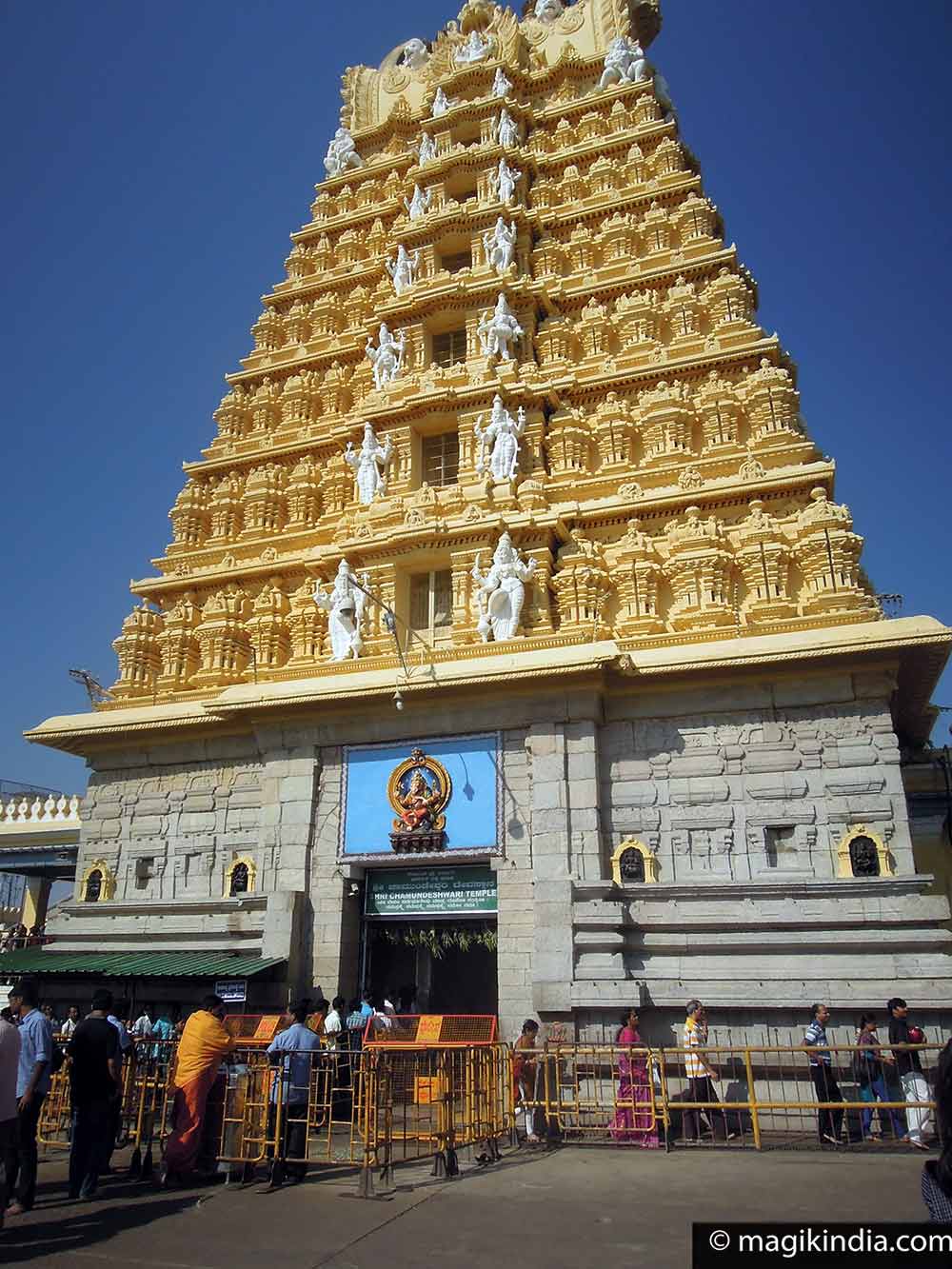
Srirangapatna (20km)
Srirangapatna was the citadel of the Mysuru kingdom for a while. It is a rocky island between two braids of the sacred river Kaveri.
The story of Srirangapatna goes back to the 9th century CE when the Ganga kings governed the region from their capital at Talakadu. They built a temple to Sri Ranganathaswamy on the island, whence the name of Srirangapatna.
The island is dotted with historic and religious monuments:
Ranganathaswamy
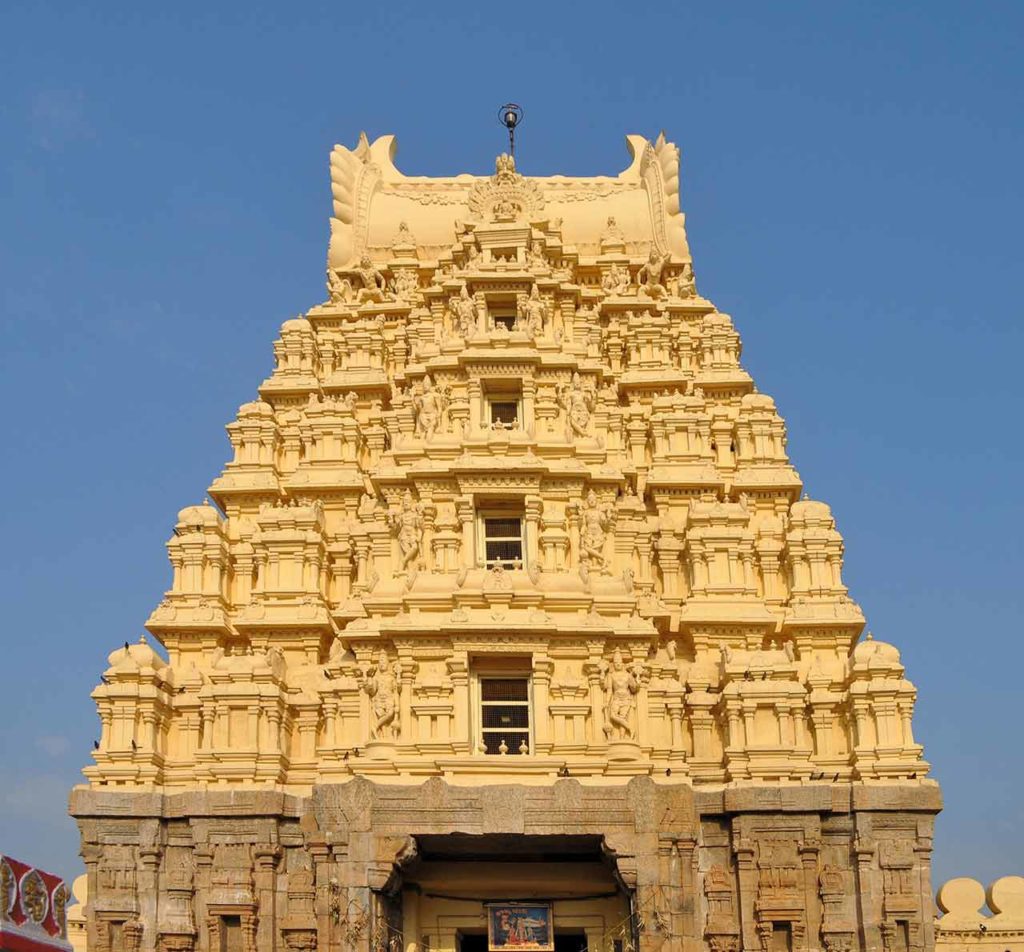
The temple is dedicated to the Hindu god Ranganatha, a manifestation of Vishnu. For Vishnuites (devotees of Vishnu) it is one of five important pilgrimage sites along the Kaveri river, known collectively as the ‘Pancharanga Kshetrams’. Starting from the upstream end Srirangapatna is the first, and the shrine here is called Adi Ranga (“first place”).
The Gumbaz, mausoleum of Tipu Sultan
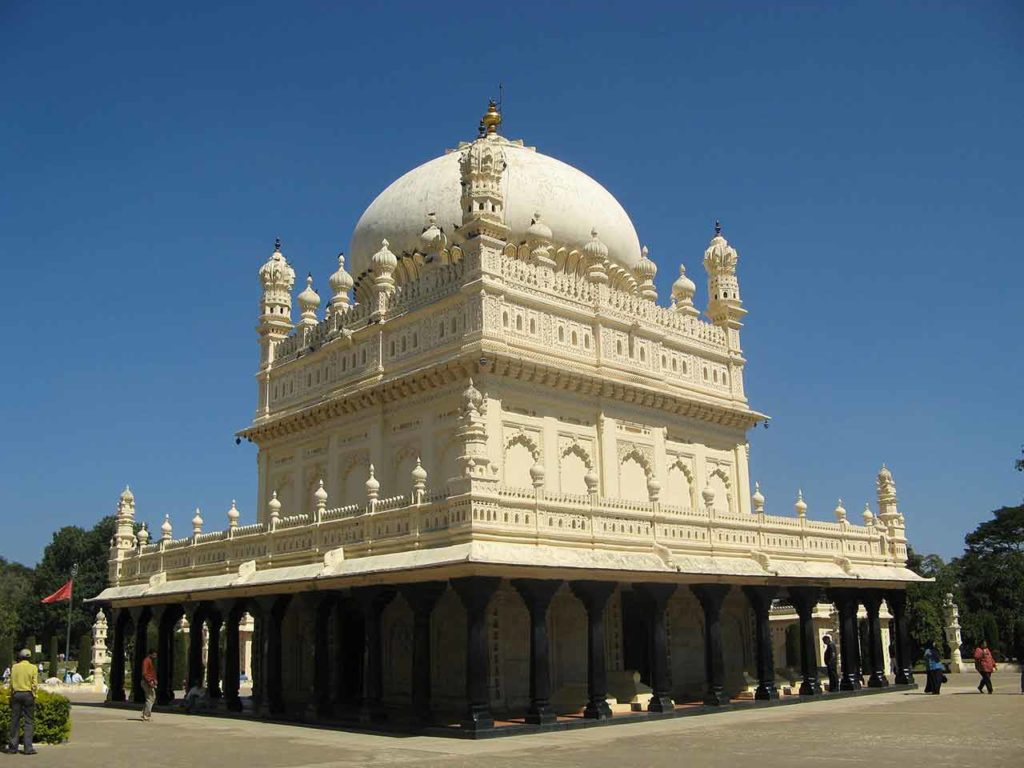
The Gumbaz is a mausoleum housing the remains of Tipu Sultan, his father Hyder Ali and his mother Fatima Begum. It stands amid beautifully manicured gardens.
Daria Daulat Bagh or Tipu’s summer palace
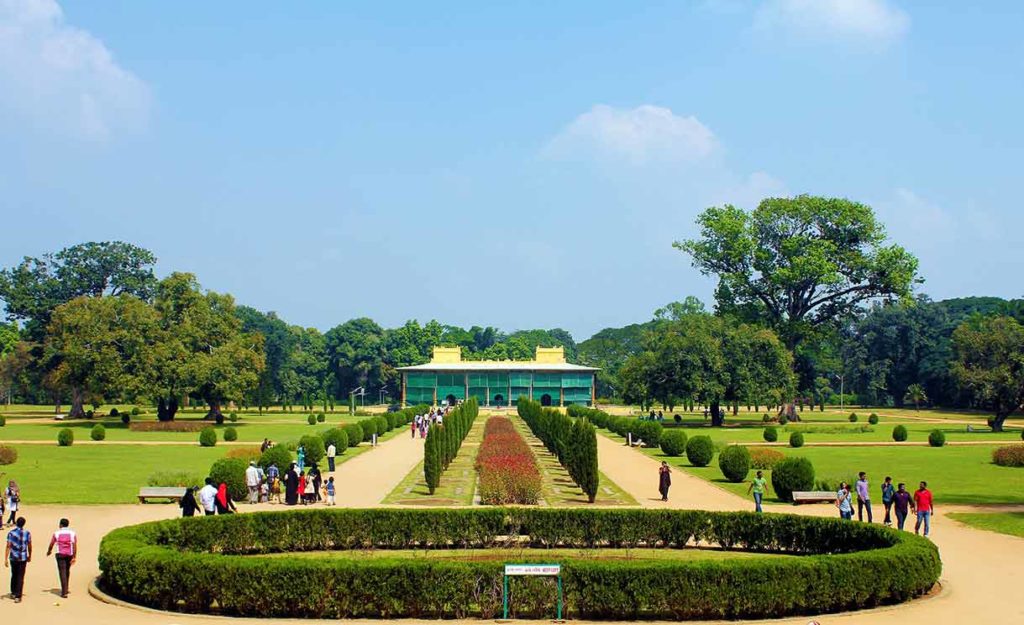
Built in 1784 in the garden “Daria Daulat Bagh” by Sultan Tipu (the “Tiger of Mysore”), the summer palace features Indo-Saracenic style architecture with beautiful colourful frescoes covering much of the walls and ceilings.
Tipu ruled Mysore from there for a short time after his father, Sultan Hyder Ali, wrested power from the Wodeyars in the mid-18th century.
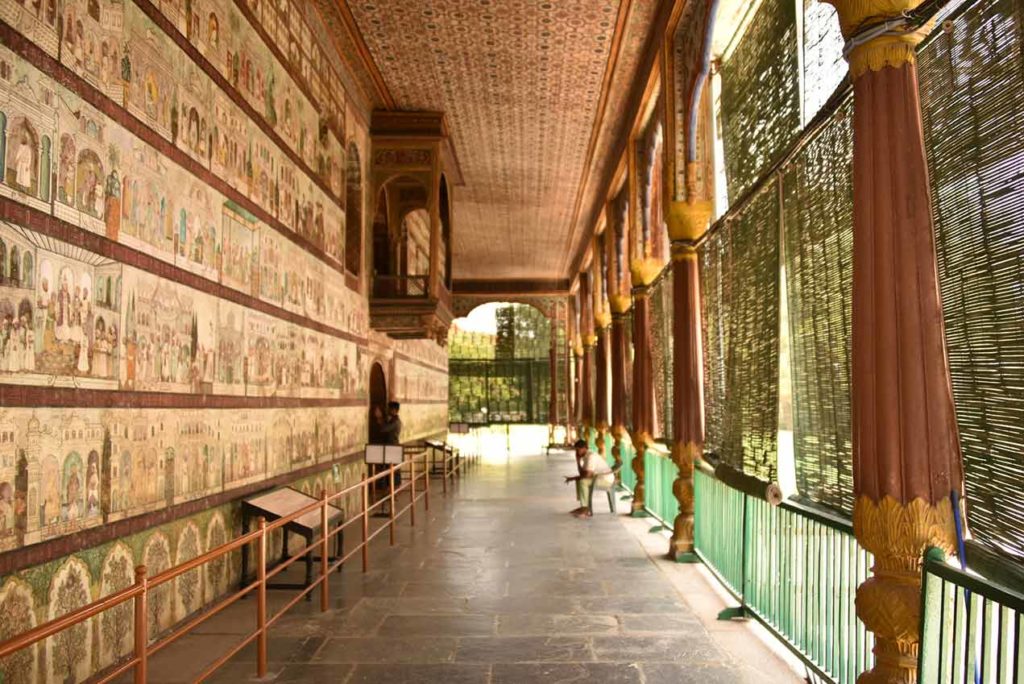
Sangam
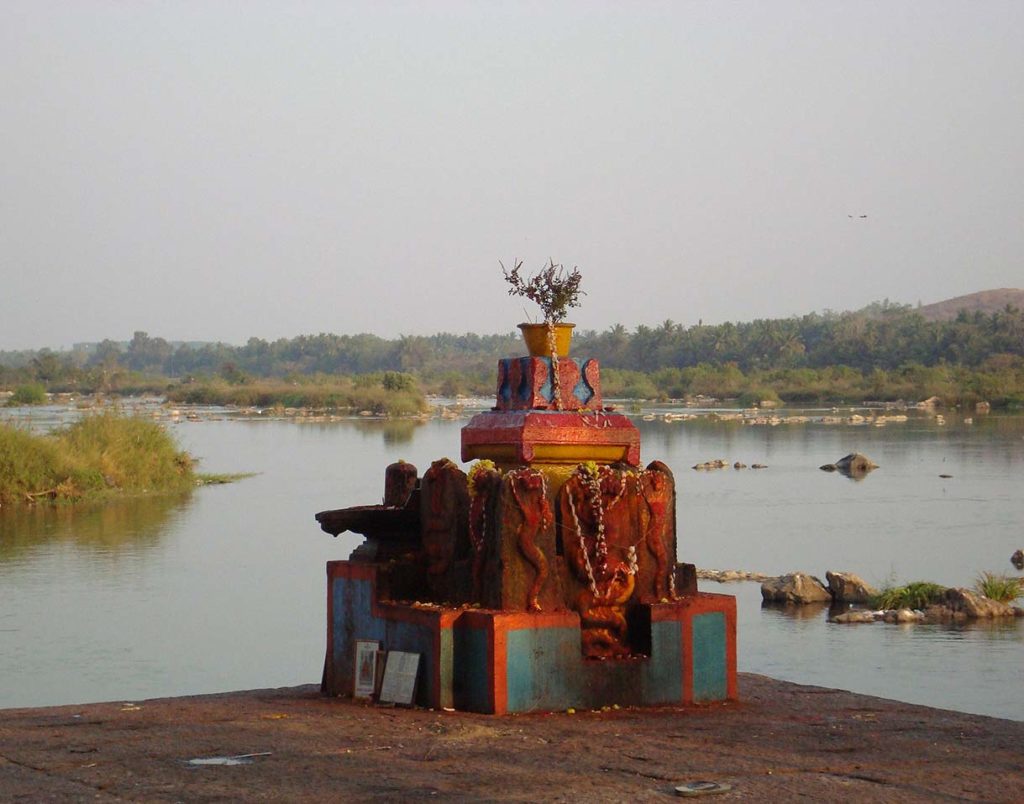
Sangam is the point where the rivers Hemavati, Loakpavani et Kaveri meet. Like all sangams (confluences of three rivers), it is considered a holy place. Indians come here for ritual ablutions.
Talakadu temples (45km)
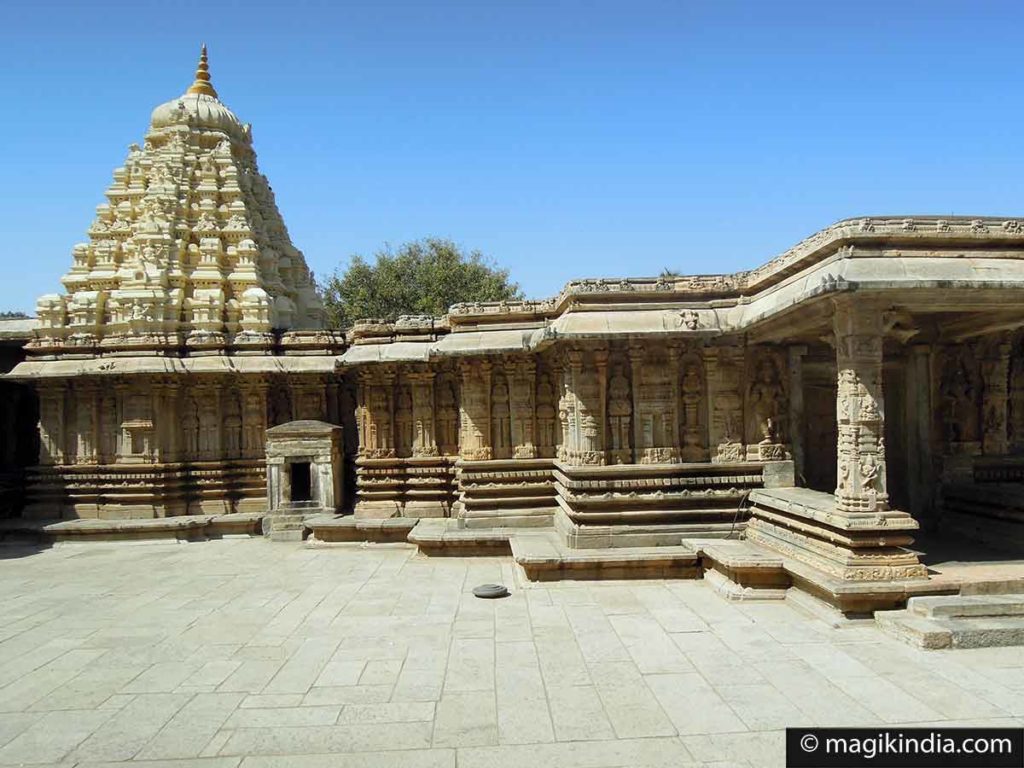
Talakad or Talakadu is a small city located in the middle of sand dunes, on the left bank of the Cauvery river, 45 km from Mysore.
The presence of this small desert is surprising in this region and popular belief attributes it to a curse. A woman named Allemelamma was coveted by the sovereign Raja Wadiyar I following the death of her husband. As he was sending men to capture her, she cast a spell before committing suicide in the Cauvery River: “May Talakadu be filled with sand, may Malangi become a whirlwind and may the kings of Mysore never have children”.

Whether it’s a curse or not, the fact is that kings never had heirs and this desert city has no scientific explanation.
It is believed that it once had over 30 temples, most of them are still buried under the sand. The only temple spared is that of Vaidyeshvara, dedicated to the Hindu god Shiva.
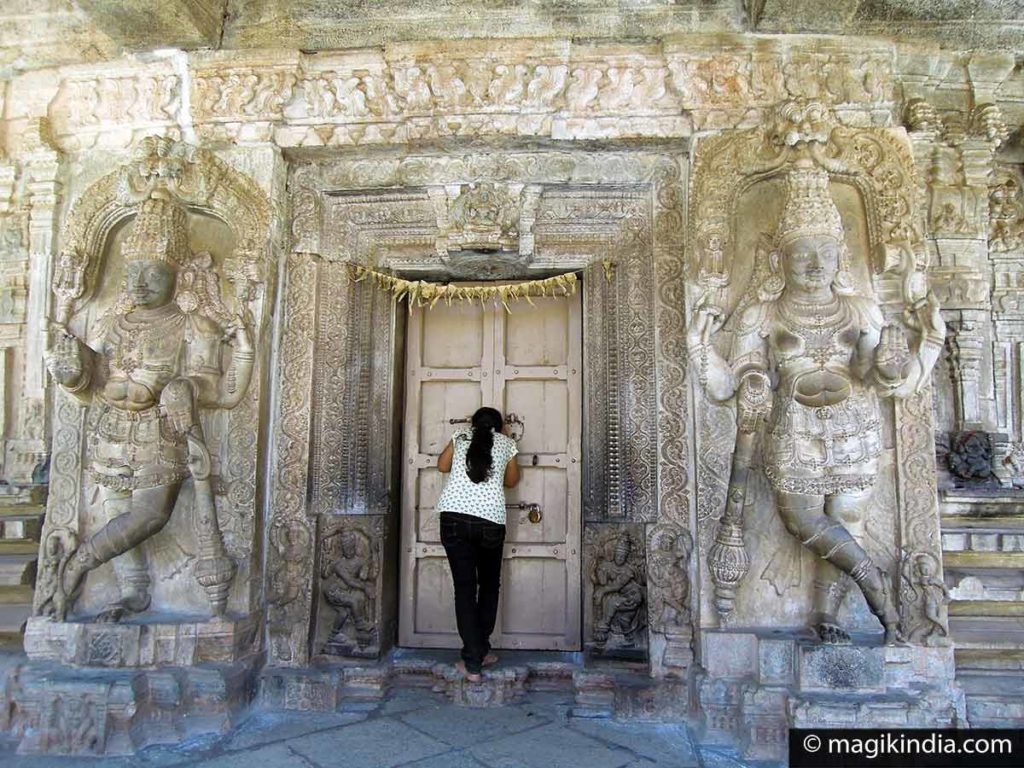

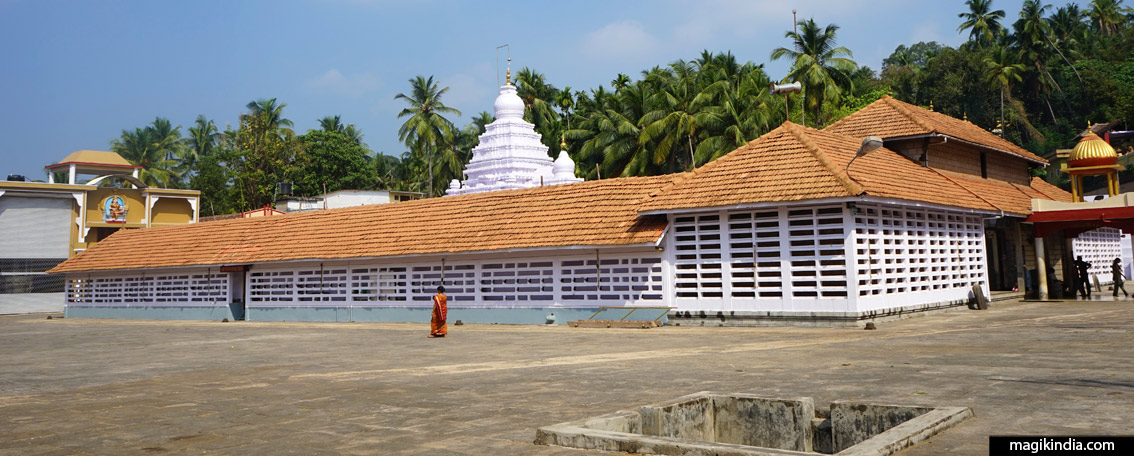
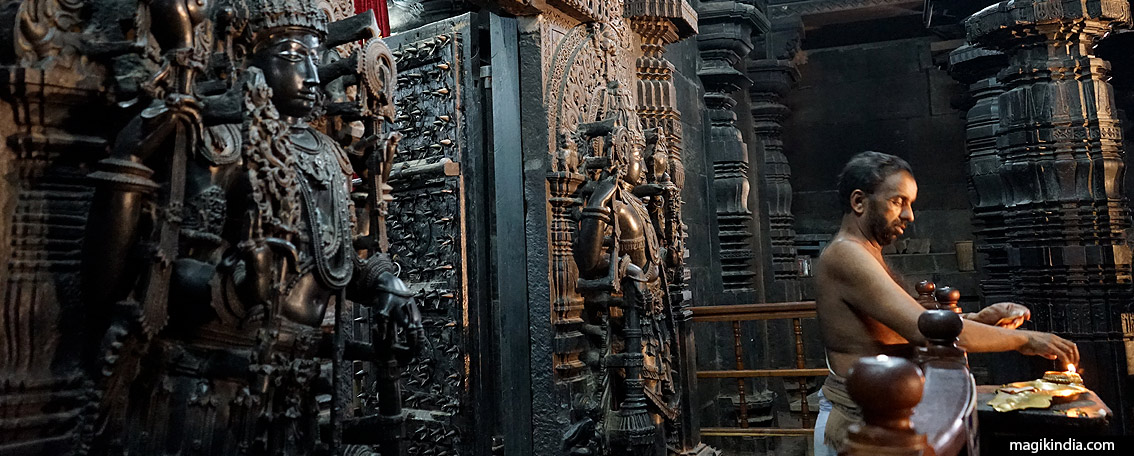
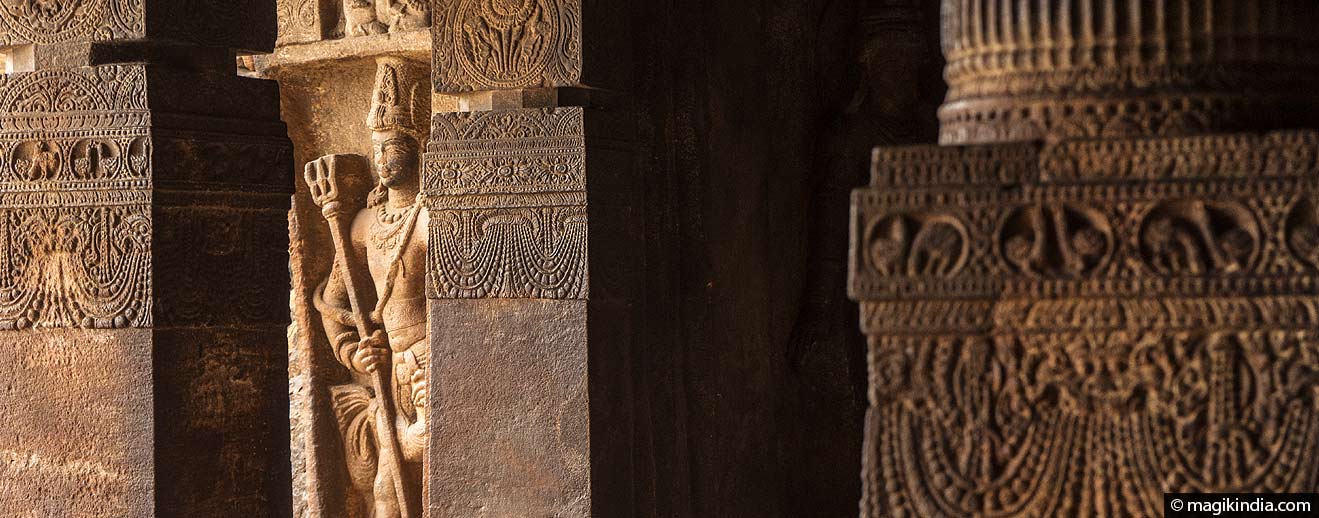
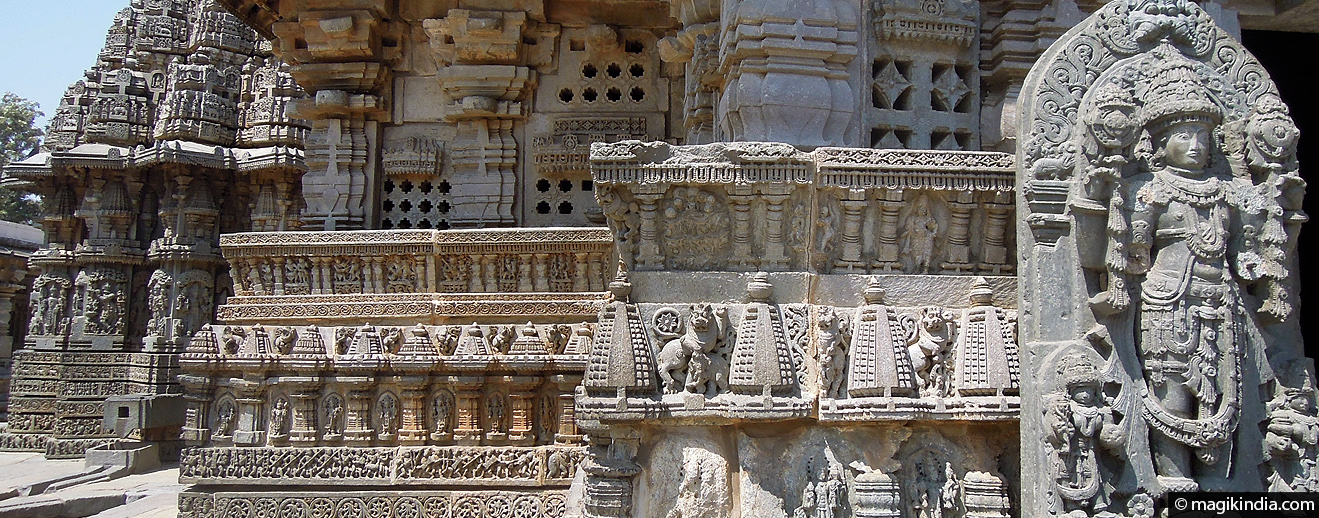
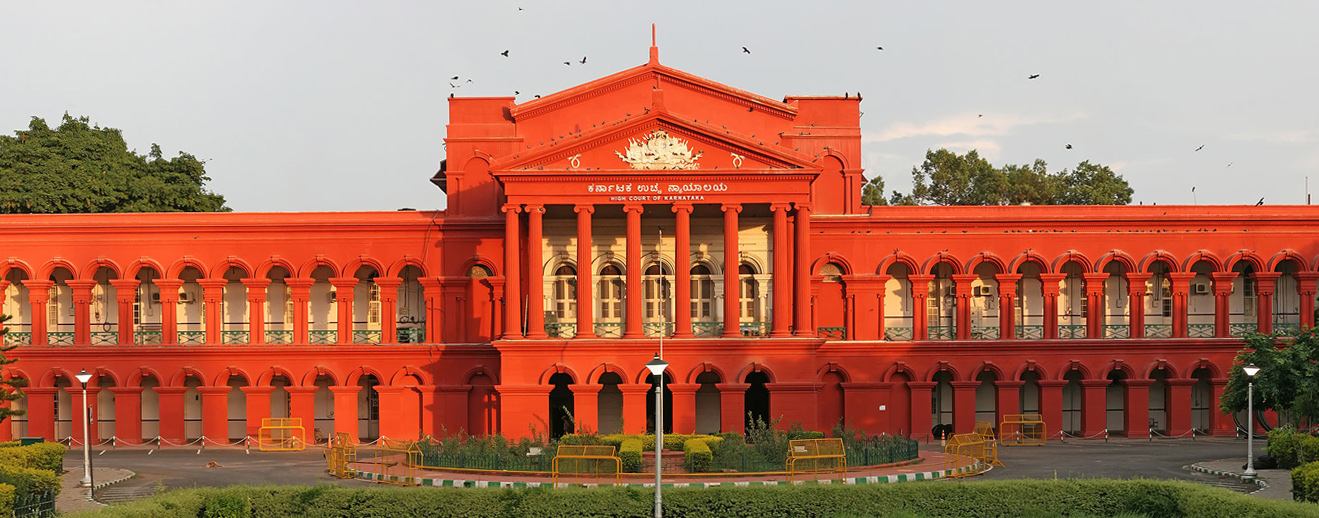
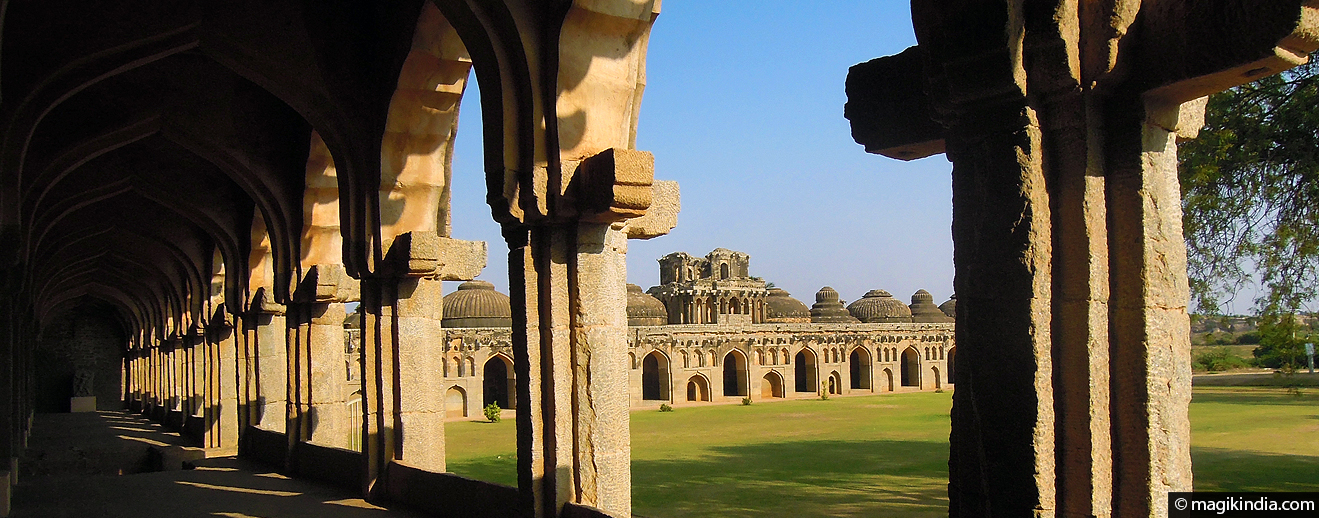
India Karnataka Mysore city Jaipur Hubli